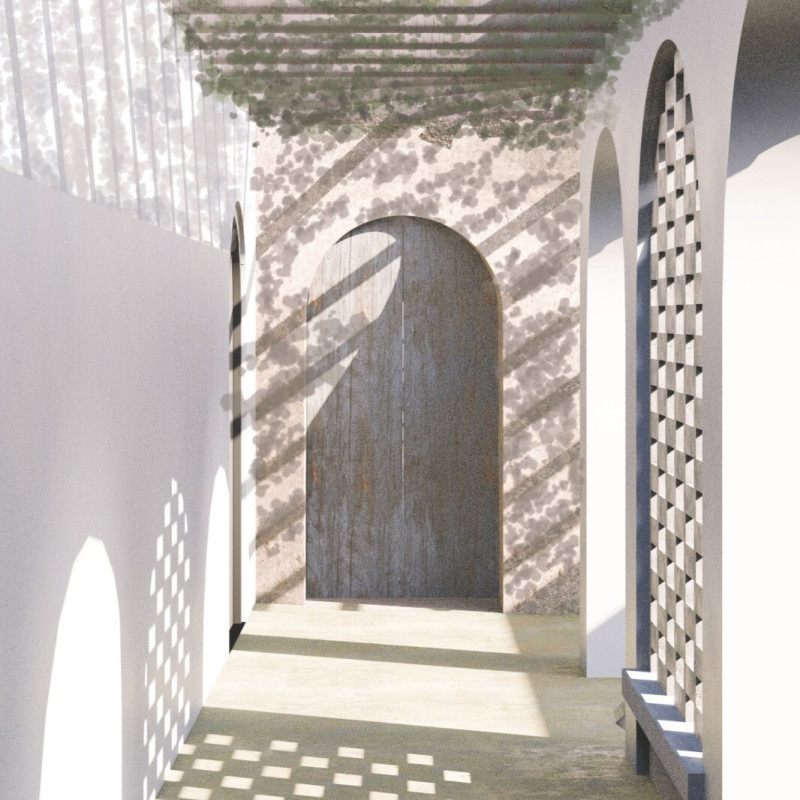5 key facts about this project
The architecture of the project emphasizes fluidity and openness, utilizing an open-plan layout that promotes seamless movement between spaces. This design choice allows for flexibility, enabling users to adapt the areas for various purposes, whether for work, socialization, or relaxation. The careful arrangement of public amenities, such as meeting areas and communal lounges, encourages a sense of belonging and enhances community dynamics. The interior spaces are proportioned to create a welcoming atmosphere, prioritizing natural light and ventilation. Floor-to-ceiling windows frame views of the surrounding landscape while ensuring that interiors are bathed in natural light throughout the day.
Materiality plays a crucial role in the project's identity, with a deliberate selection of materials that reflect both durability and aesthetic appeal. Concrete forms the primary structural framework, providing strength while allowing for a minimalist aesthetic. Glass elements integrate harmoniously within the façade, maximizing transparency and creating a dialogue between the interior and exterior environments. The inclusion of wood adds a layer of warmth, enhancing the inviting nature of the spaces while reinforcing a connection to nature.
An essential aspect of this project is its sustainable design features. The architecture incorporates passive design strategies that optimize energy efficiency, such as strategic orientation to minimize heat gain and maximize natural ventilation. The roof system is equipped with green technologies that facilitate rainwater harvesting, and energy systems that harness solar power underscore the project’s commitment to environmental stewardship. These sustainable solutions not only contribute to reduced operational costs but also establish a model for responsible architecture in contemporary settings.
The architectural form is characterized by clean lines and a refined silhouette that resonates with both modern and local architectural constructs. The design subtly references regional styles without mimicking them directly, ensuring that the building feels at home in its geographical context. The roof's undulating profile offers a unique visual rhythm, enhancing the overall aesthetic while accommodating functional needs such as rainwater collection and insulation.
One of the project’s unique design approaches lies in its community-centered philosophy, which was evident in the collaborative process during its development. Engaging local stakeholders, the design team gathered insights that informed many aspects of the architecture, resulting in a structure that not only meets the needs of its users but also reflects their aspirations and cultural context. This emphasis on community engagement fosters ownership and pride among local residents, reinforcing the project’s role as a hub within the neighborhood.
As visitors explore the various spaces, they are drawn into thoughtfully designed areas that invite interaction and engagement. From the welcoming atrium that serves as a focal point to the intimate alcoves for reflection, each space has been designed to enhance the human experience. The careful attention to detail can be seen in features such as integrated seating solutions and adaptable spaces that promote both individual focus and community connection.
This architectural project serves not just as a physical structure but as a narrative of the interplay between design, environment, and community. It stands as an invitation to explore innovative architectural ideas that prioritize sustainability and social cohesion. For those interested in delving deeper into the specifics of this project, including architectural plans, sections, and additional design details, a thorough exploration awaits, revealing the many facets of this engaging architectural endeavor.























